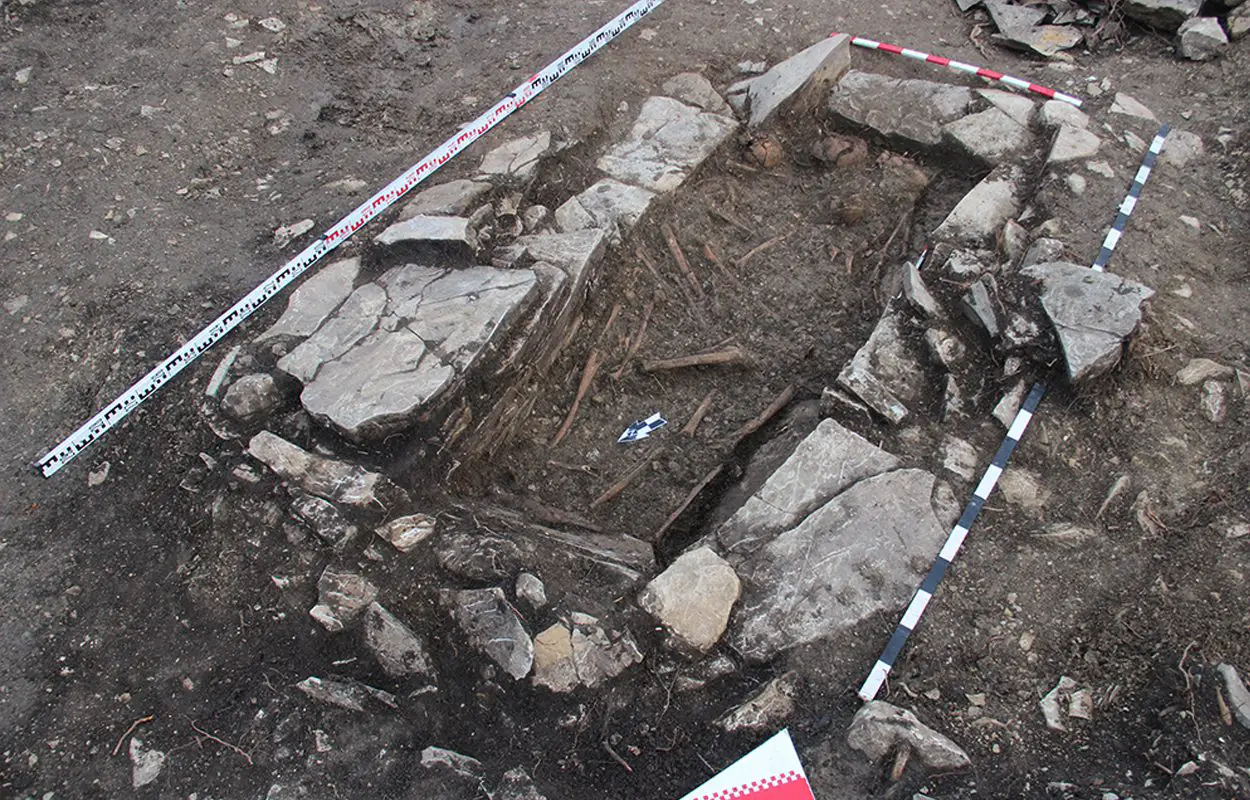Archaeologists from the Institute of Archaeology of the Russian Academy of Sciences have uncovered a burial necropolis from the 4th to 3rd century BC.
The discovery was made during construction works for a new federal highway in Kuban, located in the North Caucasus region of southern Russia.
Excavations revealed a necropolis on an ancient floodplain terrace containing rectangular burial pits lined with flat slabs or marl or sandstone. A total of 22 burials were identified, however, many of the graves had been robbed or damaged during antiquity.
One of the burials (designated Burial No. 19), contained the skeleton of a man and a woman, which were found with funerary offerings of bronze rings, a spear, and an iron tip.
Excavations also found a tomb (designated Burial No. 10), which held the remains of five individuals buried with multiple spears, silver decorative objects, iron knives, and bronze rings, one of which is decorated with an image of a two-column temple portico.
Only one burial (designated Burial No. 15) showed no signs of disturbance, where archaeologists found a Heraclean amphora, a black-gloss bowl, bronze and iron rings, and a bronze bracelet.
In the vicinity of the necropolis, numerous amphorae and tableware consisting of jugs and bowls were recorded. According to the researchers, a majority of these objects were imported from Heraclea Pontica on the coast of Bithynia in Asia Minor, which were likely used in funerary feasts to honour the dead.
Header Image Credit : Russian Academy of Sciences





